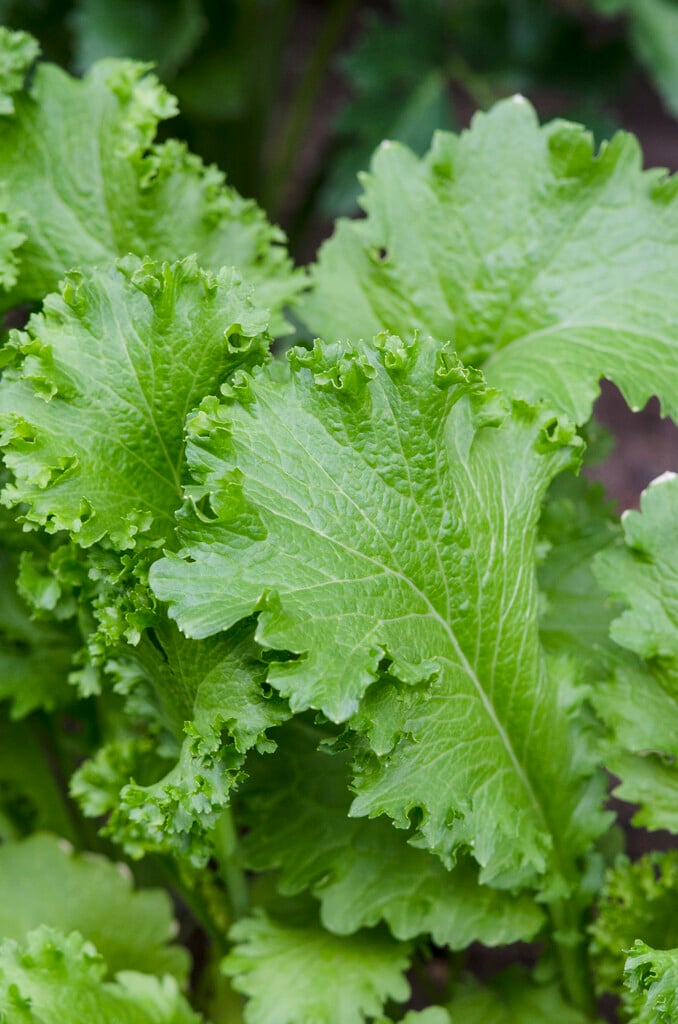Brassica juncea
Chinese mustard
This is the plant from which many types of oriental mustard greens have been bred. It looks very similar to other wild brassicas, with evergreen leaves and yellow flowers. It is extremely variable but the lower leaves are larger, on stalks, often with several leaflets and a wavy or toothed edge, whilst the upper leaves are small, stalkless and narrow. The flowers become long green pods containing brown seeds. All parts are edible when young
Other common names
Dijon mustardgai choi
see moreIndian mustard
kai choy
kai tsoi
karashina
leaf mustard
mibuna
mustard cabbage
mustard greens
rai
Swatow mustard

Buy this plant
Size
Ultimate height
1–1.5 metresTime to ultimate height
1–2 yearsUltimate spread
0.1–0.5 metresGrowing conditions
Moisture
Moist but well–drainedpH
Alkaline, NeutralColour & scent
| Stem | Flower | Foliage | Fruit | |
| Spring | Green | |||
|---|---|---|---|---|
| Summer | Yellow | Green | ||
| Autumn | Yellow | Green | Green | |
| Winter | Green |
Position
- Full sun
Aspect
South–facing or West–facing
Exposure
Exposed or Sheltered Hardiness
H5Botanical details
- Family
- Brassicaceae
- Native to GB / Ireland
- No
- Foliage
- Evergreen
- Habit
- Bushy
- Potentially harmful
- Skin irritant/allergen. Wear gloves and other protective equipment when handling
- Genus
Brassicas can be annual, biennial or perennial plants, most are upright with alternate, often glaucous leaves, long taproots and clusters of cross-shaped, yellow or white flowers. The genus includes a number of species bred to produce food crops, such as cabbages, turnips, mustards and oilseed rape, as well as others grown for their ornamental value
- Name status
Correct
- Plant range
- Caucasus
How to grow
Cultivation
Sow seed outdoors in deep, fertile but firm, soil that isn't too acidic. If space is limited, start the seeds in modules or seedtrays and plant outside when big enough to handle easily (about 5 or 6 leaves). Watering through the summer months is very important. For more advice see vegetable cultivation
Propagation
Propagate by seed. See sowing vegetable seeds
Suggested planting locations and garden types
- Patio and container plants
Pruning
No pruning required
Pests
May be susceptible to flea beetle which can prevent seedlings from thriving and attacked by caterpillars when eggs laid by butterflies, hatch and feed. It is very popular food for pigeons which only netting can prevent. It is also eaten by snails, although once plants are established, this damage isn't usually severe. The cabbage root fly can cause failure to thrive and a heavy infestation of mealy cabbage aphid can spoil the harvest
Diseases
May be susceptible to brassica downy mildew and brassica white blister. In areas where brassicas have been grown before, club root can build up in the soil
Get involved
The Royal Horticultural Society is the UK’s leading gardening charity. We aim to enrich everyone’s life through plants, and make the UK a greener and more beautiful place.